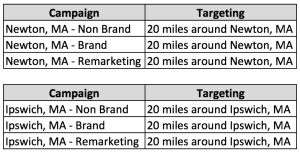Let’s sit down and sign a contract. It will last for 10 years, and it will cost you hundreds of thousands of dollars, if not millions. What you’ll get out of the deal will be an office. Yes, an office: the physical real estate that was deemed unsafe by the pandemic, and which continues to be an uncertain space for human use. The remote work of the lockdown days has evolved, post-pandemic, into here-today-gone-tomorrow hybrid work. As a result, office spaces are often occupied only some of the time, and in some cities they are virtual ghost towns, stacked in vertical ghost buildings, filling ghost blocks.
With high vacancy and low demand, the debts coming due on many of these buildings may simply be unpayable. But office spaces in general are not dead. Long-term office leases are being signed at pre-pandemic levels, and companies are willfully making multiyear commitments to rooms and buildings that, just a few years ago, their employees could not even enter. Contracts for these seemingly precarious spaces are being written across the country in what experts are calling an extraordinary moment for both office owners and tenants. Here is a pen. Will you sign?
“The office is not dead,” says Mark Rose, CEO of Avison Young, a real estate broker and services company. Rose has been in commercial real estate for nearly 40 years and calls this just another market trough, albeit one flavored by an unprecedented pandemic. The idea that offices are no longer needed or that most will stay empty for long is, in his opinion, unrealistic. “It’s just crazy ridiculous.”
The landscape has undoubtedly changed, though, and Avison Young’s own data backs this up. Before the pandemic, commercial real estate lease lengths in top tier cities averaged between 90 and 100 months, or about eight years. The pandemic saw that figure drop to 76 months (about six years), the lowest average in decades.
So, is there a newfound aversion to the long-term lease? Avison Young’s data suggests no; since that low point of 76-month-lease terms in July 2021, the average climbed to 82 months by January of this year.
And in raw numbers, leasing is going up. According to an analysis by the global commercial real estate services firm CBRE, average lease activity in 2022 was about the same as in 2019 (pre-pandemic). “They were just for smaller amounts of space,” says Julie Whelan, CBRE’s global head of occupier thought leadership. The average office lease covered about 26,000 square feet in the first quarter of 2023, a drop from the pre-pandemic square footage of more than 39,000. Companies are still seeking office space, just in smaller amounts. “In terms of the churn of paper and transactions, there was a lot of it,” Whelan says.
Overall, though, demand is certainly less than what it was before the pandemic. CBRE reports that quarterly office leasing averaged about 50 million square feet before the pandemic. In the first quarter of 2023, only about 34 million square feet were leased. This has put office building owners in a bind. Office vacancy in many cities is hovering between 15% and 25%, and shortfalls in rent are making it hard to pay the bills on buildings that often carry loans in the hundreds of millions of dollars.
To fill the gaps, building owners are making generous concessions to tenants and spending millions of dollars on upgrades and renovations. That’s resulting in more interesting designs across the spectrum of offices—from the most expensive new towers in major downtowns to the older and less-equipped B- and C-class buildings on their fringes. For those willing to make a long-term commitment to the once-unshakeable office building, tenants are now getting more for their money, according to Mike Watts, CBRE president of investor leasing in the U.S. “It’s a good time to be a tenant if you’re ready to sign a lease,” he says.
A good time to be a tenant
But the long-term lease, now more than ever, has strings attached.
Haril Pandya is a principal at Nelson Worldwide, a 700-person architecture and design firm with offices across the U.S. He recently worked on an office repositioning in Boston that encapsulates the challenge to building owners and the opportunity for tenants. The building, One Lincoln, had lost a major tenant, resulting in several hundred thousand square feet of space to fill. The owners made a deal with a different tenant for a big chunk of that, 350,000 square feet, triggering a dramatic renovation on the owner’s dime.
“Part of the lease deal is ‘Thou shalt create X, Y, Z, A, B, and C,’” Pandya says. “They asked for the moon, and they’re giving them the moon.”
The building, as can be seen in glimmering fly-throughs, is being retrofitted to include a biergarten, a food hall, a dedicated amenity floor, a whiskey bar, a game room, rooftop dining alongside an outdoor tennis/basketball court, a jogging track, a fitness center with a boxing ring, and a giant skylightedl conference center. Overall, the building is getting about $40 million worth of upgrades, which will also help attract other tenants to the rest of the building. Some of these features, Pandya notes, will even end up being revenue-generating spaces for the building’s ownership. “You have to have things that other buildings simply don’t have to actually make this stuff impressive,” he says.
His firm is doing other similar retrofits, with office owners trying to find ways to lure companies, who are in turn trying to lure their employees back to the office. “Because we’ve been working from home for so dang long, they’re trying to make a lot of these office spaces, amenities, and third spaces feel like home. So you’ll see a more residential or hospitality vibe introduced into a lot of office buildings,” Pandya says.
That can take the form of WeWork-style amenities like a pool table or a bar, or more unexpected architectural features. “I’ve done five projects that have secret doors. It’s really wild,” Pandya says. “It’s got to have a really high cool quotient to make it work.”
That can also mean providing something basic that other buildings can’t. In Seattle, one office project has been able to buck the high-vacancy trend through a major investment that focused, mid-pandemic, on keeping ground-floor retail open. One and Two Union Square, a two-tower office complex in the city’s central business district, is owned by Washington Holdings, a Seattle-based real estate company that owns offices, residential, hospitality, and retail buildings across the West Coast.
During the pandemic, the company decided to do whatever it could to keep the buildings occupied. This meant giving companies a reason to bring their workers back, and giving workers more access to amenities on-site. Part of the strategy involved discounting or even pausing rent on the buildings’ retail tenant under the condition that they would remain open. All but one of them survived the pandemic. “It turned out to be a good investment for us,” says Craig Wrench, the company’s president and CEO. “One of the things that’s happened to a lot of buildings downtown is they didn’t preserve their retail ecosystem. They lost basically all of their retailers and they’re still dark.”
Wrench’s company also took on a massive renovation project, updating offices and infrastructure, reworking the lobby and common areas, upgrading outdoor space, adding a coffee shop, and starting a program for local buskers to come perform to lunchtime crowds. “It’s not just one thing that you can do,” Wrench says. “What we did to the public areas has worked really well, in combination with our preservation of the retail ecosystem, in combination with a lot of the live programming.”
It also involved a significant amount of capital, which is likely not going to be available to many building owners around the country for the foreseeable future. “It’s a very, very big property, and its value exceeds a billion dollars. The total cost of our project was probably 10% of that,” Wrench says. “This is a once-every-30-years kind of repositioning.”
Competition for diminished tenant demand is also pushing building owners to make other costly concessions, like including flexibility into lease contracts for the addition or subtraction of floor space, granting more capital for tenants to furnish empty office floors, and even handing out months of free rent. “All those things are on the table right now as owners try to compensate for less tenancy in the market,” says Watts.
These concessions—the $100 million renovations, the flexible leases, the whiskey bars—are mostly happening at the high-end of the office market, in the so-called Class A buildings. (Designations are subjective, but for the purpose of this article: Class A buildings tend to be new and packed with amenities and located in desirable areas; Class B buildings are older and feature fewer amenities and may be in less appealing locations; Class C buildings are even older and feature even fewer amenities and, so it follows, are located in even less desirable locations.)
Watts says that among tenants who can, there has been a growing tendency to move into newer offices with more amenities for not much more than they’d been paying in their previous lower-tier offices. But the competition for tenants isn’t just happening in trophy buildings. Class B buildings that may be a few decades old (and definitely do not have boxing rings) are finding they can make minor fitness or conference center upgrades to lure tenants who may currently be in even older, less amenity-rich Class C buildings. “Those buildings do have a second bite at the apple,” Watts says.
Some buildings won’t be able to compete. “C and C-minus buildings, in the same way we saw with C and C-minus malls, things get functionally obsolete,” says Rose. “That’s part of life and those buildings, maybe they’re going to have to be repurposed, maybe they’re going to have to be torn down.”
Cost of doing business
The rough reality for many office buildings is that staying competitive will simply be out of financial reach. Cities are seeing average office vacancy rates of up to 30%, but many individual buildings are nearly or completely empty. With little rent coming in and an estimated $1.4 trillion worth of commercial real estate loans coming due between now and 2027, many analysts predict that lots of office-building owners will be forced to give their underperforming buildings back to their lenders. And for those owners hoping to invest in keeping their buildings attractive to current and prospective tenants, there is no money on the table now to save the day.
“There’s just not a lot of lenders right now that are looking to lend significant amounts of capital into office,” says Watts.
New loan valuations will undoubtedly take into account the distressed state of office leasing, which will further strain the ability of office-building owners to afford renovations. “You don’t have as many options as you would want on the financing side, and it may require you to put more money into the loan itself to get it extended, and maybe that was capital you wanted to earmark on creating new amenities,” Watts says.
But experts suggest that financing may not be that far off for some of these buildings. “It’s very constricted right now,” says Watts. “But we’re hopeful by the end of the year, you’re going to have more lending available to owners of office buildings.”
Mark Rose of Avison Young is slightly less optimistic. “We were all hoping for it by September, but I think that’s in 2024,” he says.
Whenever the financing, as interest rates and inflation issues cool down, Rose says office buildings will still have a long road ahead, just like in any other recovery period after a downturn. He’s looking five years down the line for things to really stabilize, and argues that the short-term pain is far from the death of the office.
“It is a difficult moment, but we’ve seen this before,” Rose says. “This too shall pass.”
The contract now sitting before you is waiting. It’s a seven, maybe even 10-year commitment for an empty floor in a tower in Downtown U.S.A., and it just needs your signature.
A signed deal is what pretty much everyone wants: the underwater building owner, the banks holding the building’s not insignificant loan, the non-unconcerned office broker, the city officials watching their coffer drying up, and even you, the potential tenant who wants or needs a physical place to do business even in a hybrid world.
All these conditions make the prospect of signing this contract a risky one. But according to the experts looking at the long-haul for both office owners and potential tenants, now may be exactly the right time to make that commitment. You, the tenant, can ask for more of what you want, and almost everybody who can will be willing to give it to you. A signature is all it takes.
(6)











